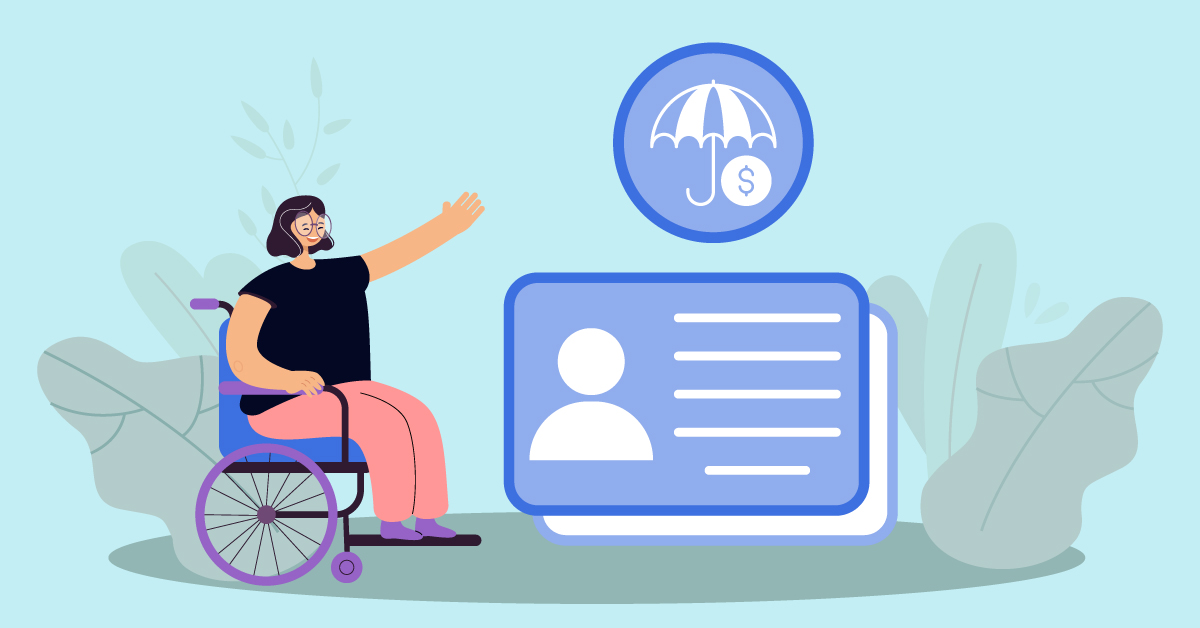You may have heard of Social Security Disability before, but do you know what it really is? Is it the same as the portion of Social Security that gets taken out of every paycheck? While yes, they are both handled by the Social Security Administration Department, Social Security and Social Security Disability are different. So what exactly is Social Security Disability, and how do you qualify? In this article, we’ll cover what Social Security Disability is, how it works, who is eligible for benefits, and the application and appeals process.
The History of Social Security Disability
Social Security Disability began in 1956 as a part of the Social Security Act. It was created to provide assistance to people who were unable to work due to severe and permanent physical or mental impairments. However, over the years, the program has been altered and expanded in order to provide more relief for disabled individuals.
In 2017, there were over 10 million Americans receiving disability benefits through this program. Today, Social Security Disability is considered one of the most important sources of income for disabled individuals and their families.
What Exactly Is Social Security Disability?
Social Security Disability is a program run by the U.S. government to provide financial assistance to individuals who are unable to work due to physical or mental impairments. It is available to both adults and children and can offer much-needed relief for those struggling with disability-related hardship.
This program is funded by payroll taxes paid by employers and employees, providing a vital source of income for individuals who are otherwise unable to work due to their disability. Eligible applicants must meet certain criteria in order to qualify for benefits, including having worked long enough and recently enough under the Social Security system, as well as having a medical condition that meets Social Security’s definition of disability.
How it works
Once an individual is approved for benefits, they will receive a monthly payment from the Social Security Administration (SSA). The amount of this payment varies depending on the individual’s past earnings and other factors, but it can provide crucial income for those with disabilities. Additionally, there are also supplementary programs available through the SSA which provide additional financial assistance to those receiving disability benefits.
Who Qualifies For Social Security Disability?

To qualify for Social Security Disability, an individual must have worked long enough and recently enough under the Social Security system, showing that they paid taxes and built up a history of employment. Additionally, they must have a medical condition that meets Social Security’s definition of disability.
This generally includes physical or mental impairments which prevent them from engaging in significant gainful activity, have lasted at least one year or are expected to last at least one year, and are considered severe enough to cause disability.
Eligible medical conditions for Social Security Disability include:
- Musculoskeletal disabilities such as back pain, limb amputations, and joint disorders
- Respiratory illnesses such as asthma, COPD, and cystic fibrosis
- Neurological conditions such as multiple sclerosis, cerebral palsy, Parkinson’s disease, and epilepsy
- Mental health disorders such as depression, post-traumatic stress disorder (PTSD), and schizophrenia
- Immune system disorders such as HIV/AIDS and lupus
- Kidney disease requiring dialysis or transplant
- Cancer
- Cardiovascular diseases such as congestive heart failure and coronary artery disease
Social Security Disability Application Process
The process of applying for Social Security Disability benefits can be a complex one, but here is a general step-by-step guide to help you get started:
- Determine if you meet the eligibility requirements: Social Security Disability benefits are designed for people who are unable to work due to a medical condition that is expected to last at least one year or result in death.
- Gather necessary information: Before you begin the application process, you will need to gather important information such as your Social Security number, employment history, medical records, and any other relevant information. It is important to note that the SSA office needs original documents. They will accept certified copies, but not photocopies.
- File your application: You can apply for Social Security Disability benefits online at the Social Security Administration (SSA) website or by calling the SSA’s toll-free number.
- Submit supporting documentation: Once you have filed your application, the SSA will request additional information from you, such as medical records and other documentation that supports your disability claim.
- Wait for a decision: After you have submitted all necessary documentation, the Social Security Administration will review your application and make a decision on your eligibility for benefits. You may have to attend a hearing with an administrative law judge.
- Appeal if necessary: If your initial application is denied, you have the right to appeal the decision. You may be able to appeal the decision by submitting additional evidence or by attending a hearing with an administrative law judge.
It’s important to note that the process of applying for these benefits can be lengthy and complicated, and it may be helpful to consult with an attorney or other qualified professional to assist you with the process. Also, make sure to keep copies of your application, anything you send to the SSA office and a record of dates you talked to an agent and their name. This will help during the appeal process or any follow-up you need to do.
Social Security Disability Appeals Process
If your initial application for Social Security Disability benefits is denied, you have the right to appeal the decision and try again. The quickest way to request an appeal is to submit a request online with the proper downloaded forms. There is also a phone number (1-800-772-1213) if you would like to speak to someone directly.
Here is a general overview of the Social Security Disability appeals process:
Reconsideration: The first step in the Social Security Disability appeals process is to request a reconsideration of your case. This involves having a different claims examiner review your application and any new evidence you provide.
Hearing: If your request for reconsideration is denied, your next step is to request a hearing with an administrative law judge. At the hearing, you will have the opportunity to present evidence and testimony in support of your disability claim.
Appeals Council Review: If the administrative law judge denies your claim, you can request a review by the Appeals Council. The Appeals Council will review your case and may decide to approve your claim, deny your claim, or send your case back to the administrative law judge for further review.
Federal Court Review: If the Appeals Council denies your claim or declines to review your case, you may file a lawsuit in federal court. At this stage, it is highly recommended that you consult with an attorney who specializes in Social Security Disability law.
Your initial determination after your appeals process will be written and sent via mail. It will outline whether or not you are eligible for Social Security Disability, the amount of money you will receive and if you were overpaid, and you must repay anything back.
Social Security Disability Payments
Once your Social Security Disability application has been approved, you will receive your monthly disability payments through direct deposit or a prepaid debit card.
Here’s what you need to know about each option:
Direct deposit: With direct deposit, your monthly disability payments are automatically deposited into your bank account on the same day each month. You can set up direct deposit by providing the Social Security Administration (SSA) with your bank account information.
Prepaid debit card: If you do not have a bank account or prefer not to use direct deposit, you can choose to receive your disability payments on a prepaid debit card. The SSA will mail you a debit card that you can use to withdraw your monthly payments from an ATM or make purchases wherever debit cards are accepted.
It’s important to note that if you choose to receive your payments via a prepaid debit card, there may be fees associated with certain transactions, such as ATM withdrawals or balance inquiries. Be sure to read the terms and conditions carefully before selecting this option.
Regardless of how you choose to receive your Social Security Disability payments, it’s important to keep your contact and payment information up to date with the SSA to ensure that you receive your benefits on time.
Social Security Disability FAQs
Do you still have a few questions about Social Security Disability? We’ve got you covered with common questions and answers.
How long is the waiting period for social security disability?
Generally, it takes anywhere from three to five months for a decision on Social Security Disability (SSD) eligibility. During this period, your application is reviewed, and you may be asked to undergo additional medical tests or assessments. After the review of your application and any medical evidence, you will either be approved or denied.
How much work do you need for Social Security Disability?
In order to qualify for Social Security Disability, you must have enough work credits (you can earn up to 4 total credits each year) from social security. Although the number changes annually, in 2023, you get 1 credit for every $1,640 you earn, and once you’ve reached $6,560, you’ve earned your total 4 credits for the year.
How much money will I receive in Social Security Disability benefits?
The amount of money you receive in Social Security Disability benefits depends on your average lifetime earnings and the amount of Social Security taxes you have paid.
Can I work and receive Social Security Disability benefits?
Yes, you may be able to work while receiving Social Security Disability benefits, but there are limits to how much you can earn before your benefits are reduced or stopped.
Do I have to pay taxes on Social Security Disability benefits?
The amount of taxes you pay on your Social Security Disability benefits will depend on your total income, including any other sources of income you may have.
May I receive Social Security Disability benefits and other types of disability benefits at the same time?
Yes, you may be able to receive Social Security Disability benefits and other types of disability benefits, but the amount of your Social Security benefits may be reduced.
How long do Social Security Disability benefits last?
Social Security Disability benefits continue as long as your medical condition prevents you from working or until you reach retirement age and begin receiving retirement benefits instead.
Is Social Security Disability offered for partial and short-term disability?
No, the benefits are not available for short-term disability or partial disability.
Social Security Disability was designed by the U.S. government to provide financial assistance to those who are unable to work due to physical or mental impairments. It is available to both adults and children, and it can offer much-needed relief for those struggling with disability-related hardship.
If you think you are eligible for Social Security Disability, do not wait to apply; the process is quite lengthy, and the earlier you get started, the quicker you can receive payments.
You might also be interested in: How To Get A New Social Security Card [In 4 Steps]







